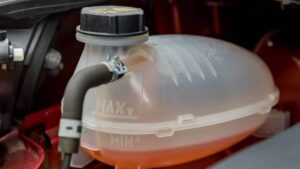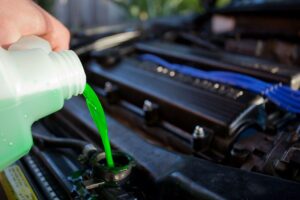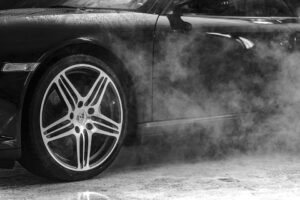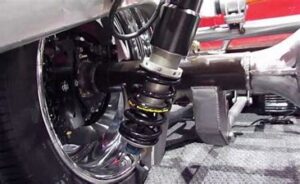We are in a world where traveling over a long distance at high speed on highways during the weekends gains much more attraction. When I went out for a long drive with my family, sudden smoke comes out of the hood. I need to stop the car and step out of the vehicle to sort out the disruptive cause. I have found a bunch of white smoke coming out of the radiator.

This is because my car uses a lot of coolants or the car is out of coolant. Though it may be a costly variant car or a low-budgeted car this must be encountered during the useful life of the vehicle. Not only the smoke in the hood but also in the bumper while starting up the car. You may wonder why it happens, surf through the article to get rid of this.
Table of Contents
Why Does My Car’s Radiator Fluid Keeps Disappearing?
There are some of the reasons you need to know before fixing this coolant problem. Coolant is one of the mandatory components for the working of an engine.
 It is added into a coolant container fixed near the radiator to suppress the heat produced by the engine. When some external factors affect this condition it started to consume more coolant. Hereby we can see what’s the reason behind it.
It is added into a coolant container fixed near the radiator to suppress the heat produced by the engine. When some external factors affect this condition it started to consume more coolant. Hereby we can see what’s the reason behind it.
1. While In Long Drive
During the long drive, my car must travel over a long distance without providing rest for the engine. As a result of this engines may get heat up to a certain extent. Here the coolant works become efficient.

It should reduce the amount of heat around the car’s engine. But due to excessive heat, the coolant requires to cool down my car is beyond the average limit. At this point, my car is using too much coolant or car is out of coolant to overcome this situation.
2. During Hill Drive
While I am driving on a hill road for a long period the same problem was encountered. This is because moving up the weight over an inclined pathway requires more thrust. For generating a greater thrust engine works continuously, and produces a lot of energy which will be utilized for uplifting.  The remaining energy dissipated in the form of heat around the engine parts. The radiator was unable to reduce the heat with a limited amount of coolant. In this scenario, my car radiator fluid keeps disappearing to step down the heat.
The remaining energy dissipated in the form of heat around the engine parts. The radiator was unable to reduce the heat with a limited amount of coolant. In this scenario, my car radiator fluid keeps disappearing to step down the heat.
3. Long Term Usage
At, present there are three types of coolant. Inorganic Additive Technology (IAT), Organic Acid Technology(OAT), and Hybrid Organic Acid Technology (HOAT). HOAT is the almost used coolant in the upcoming new vehicles which is a combination of IAT and OAT. In the early days, the common coolant was water as these three types of coolant were invented recently.

It has certain disadvantages like frequent reloading of coolants, quick freezing below the low temperature, vaporizing or boils quickly, and mainly corroding the engine and the surrounding head jacket. Different types of coolant were changed day by day. Otherwise, the lower amount of coolant doesn’t transfer heat which uses the total amount of reaming coolant for transferring the heat.
4. Vaporizing Coolant
At a certain time, the coolant begins to vaporize. When the coolant is in the liquid state, at that time the heat will be easily restricted. When the coolant vaporizes, the radiator operates under high pressure and looks over for the remaining liquid coolant in the tank for transferring heat.

At a very high-pressure radiator cap get being opened for lowering them which will cause a superheated coolant to evaporate over the air. It is the smoke coming out of the hood while I am driving at the high speed
5. Failure Of Thermostat And Cooling Fan
In the hood, there are several engine-mounted parts such as the Thermostat to control the temperature of the water jacket. The thermostat controls the coolant flow between the engine and the radiator. It operates based on the temperature when the engine remains cool the thermostat remains closed for preventing coolant flow.

The cooling fan remains inactive when the engine is cool, when the engine gets heated up it should start working. The failure of the thermostat and cooling fan is due to the reasons like excessive aging or the wear and tear in the components. Hence more coolant flows in the coolant jacket.
6. Coolant Leaks
The engine consists of several components including external housings with a hose connection at the water jacket. Rubber-type material is used in the hoses and the coolant leakage is occurring in the connections of the hose or from holes.

The water pump and Radiator can leak through seals directly to the surface and the gaskets can also cause leakage due to corrosion At this point, my car is using a lot of coolants to manage the leakage and to continue driving.
7. Entering The Combustion Valve

The Head jacket consists of a combustion engine and a coolant jacket around the engine. Due to corrosion or aging, the coolant leaks into the combustion valve gets combusted along with the fuel, and went to the bumper as a dense white smoke.
How To Lesser The Usage Of Coolant?
The following suggestions will help you to restrict the usage of coolant in the car.
1. Visual Inspection
Before going for a long drive take a moment to do a visual inspection for the leakages of coolant around the engine parts and the surfaces. Look out the joint between the hoses, radiator, heater core, and water pump for visible leaks.

If you aren’t taking a long drive then inspect the car in a time gap of one month, due to aging, the corrosive and the temperature withstanding property of the coolant decreases. If you need the better performance of the engine then you should change the coolant for every 50,000 Km.
2. Coolant Separator

Always ensure that there is a coolant separator in the head jacket. It prevents the coolant from mixing up with the combustion chamber
3. Appropriate Coolant
Select a coolant with the correct mixing ratio for your car. Improper mixing of coolant can cause severe damage to the engine.
How To Know My Car Is Using A Lot Of Coolants?
Leaks and dense smoke are the primary sources of evidence, Besides that, there will be a pungent odor of the coolant indicating that there will be a hole in the radiator or hoses. Look for the stain on the radiator cap, and search for the deposited stains below the radiator surface.

Since, the hoses are connected using rubber tubes they may experience swelling, expansion, or contraction or be subjected to tear from these we can figure out why the coolant keeps running out.
Conclusion
Every car owner will face these issues at least once in their usage. Here we went through the problem. The article provided relevant information about why the coolant keeps running out and also provided solutions for resolving these issues and the care to be taken. We hope that the given answers could satisfy you. If any queries just comment on them.



